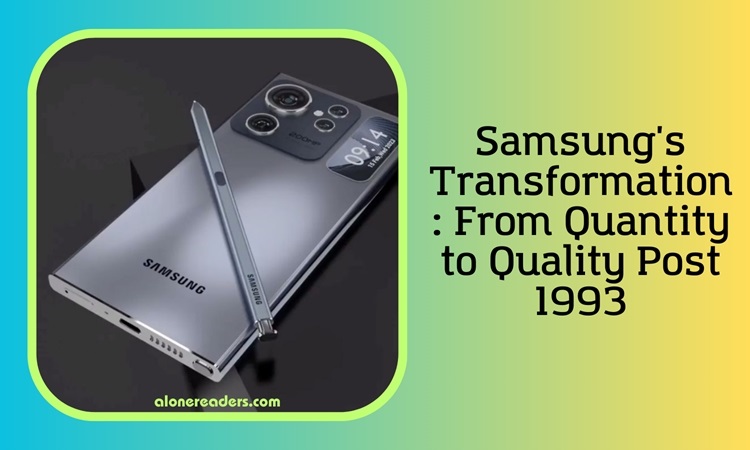Samsung's Transformation: From Quantity to Quality Post 1993
- Last updated: January 10, 2024

Samsung's Transformation: From Quantity to Quality Post 1993
In the annals of corporate history, few moments are as dramatic or transformative as the day in 1993 when Samsung Chairman Lee Kun Hee ordered the burning of 150,000 mobile phones. This event marked a radical shift for Samsung, transitioning from a company that emphasized quantity and cost efficiency to one that prioritized quality and innovation. Understanding this shift requires delving into the history and culture of Samsung, and examining how this dramatic gesture catalyzed a revolution within the company.
Founded in 1938, Samsung started as a small trading company in South Korea, dealing in groceries, producing noodles, and later diversifying into textiles and other industries. By the 1970s and 1980s, Samsung had entered the electronics industry, primarily focusing on manufacturing lower-cost consumer electronics. During this period, the company’s strategy was firmly rooted in mass production, aiming to quickly capture market share through affordable products. This approach helped Samsung establish a strong presence, but it also meant that its products were often viewed as inferior in quality compared to those of Japanese competitors like Sony and Panasonic.
The pivotal year of 1993 brought a radical transformation. Chairman Lee Kun Hee, recognizing the limitations of Samsung's existing approach, initiated a quality-first strategy. The most symbolic and widely cited example of this shift was his decision to burn 150,000 Samsung mobile phones – products that failed to meet his new quality standards. This event took place at a Samsung factory in Gumi, South Korea, and was more than just a dramatic gesture. It was a clear and unambiguous message to the entire company: the era of prioritizing quantity over quality was over.
Following this event, Samsung embarked on a comprehensive overhaul of its operations and corporate philosophy. This transformation touched every aspect of the company. From research and development (R&D) to production processes, from employee training to customer service, every facet of Samsung was re-evaluated and reoriented towards quality.
In R&D, Samsung significantly increased its investment. The goal was to not just catch up with its competitors but to become a leader in technological innovation. Samsung’s focus shifted towards creating high-quality, reliable products that incorporated cutting-edge technology. This change was most visible in its electronics and, particularly, its mobile phones.
The results of this transformation began to show in the late 1990s and early 2000s. Samsung's mobile phones, once seen as cheap alternatives, started to gain a reputation for quality and innovation. The company's emphasis on sleek designs, user-friendly interfaces, and advanced technology helped it carve out a significant market share in the highly competitive mobile phone market. By the early 2000s, Samsung was not only competing with but in many cases surpassing its Japanese rivals.
Samsung’s commitment to quality also extended beyond product development. The company revamped its customer service and after-sales support, aiming to provide a customer experience that matched the high standards of its products. Samsung began to be recognized for its reliable and responsive customer service, further enhancing its brand reputation.
This shift towards quality also had a profound impact on Samsung’s corporate culture. Employees were encouraged to focus on innovation and quality in their work. Training programs were revamped to instill these values, and new talent was recruited with a focus on creativity and a passion for excellence. The company's internal slogan, “Quality First,” became a guiding principle for every operation within Samsung.
The impact of this transformation was evident in Samsung's financial performance. By the early 2000s, Samsung had become one of the world's leading electronics companies, with a strong presence in various sectors, including smartphones, semiconductors, and televisions. Its rise was not just a testament to its focus on quality but also a reflection of its ability to innovate and adapt in a rapidly changing technological landscape.
In conclusion, the burning of 150,000 phones in 1993 was more than just a dramatic event; it was a symbol of a profound shift in Samsung's corporate philosophy. From a focus on quantity and cost-efficiency, Samsung transformed itself into a company that prioritized quality, innovation, and customer satisfaction. This shift not only changed the trajectory of the company but also redefined its identity in the global market. Today, Samsung stands as a testament to the power of a quality-first approach, proving that with the right vision and commitment, a company can redefine itself and achieve new heights of success.







